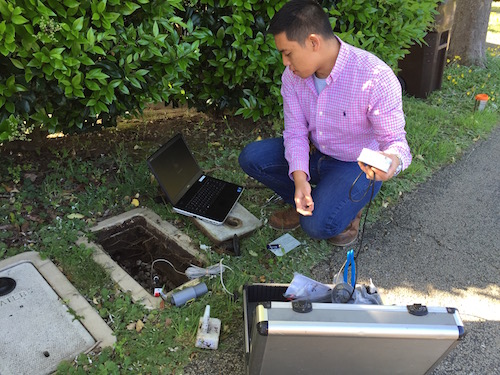UC Santa Cruz is installing cellular beacons on every campus water meter that will give users and campus resource managers the ability to track hourly usage and help discover leaks.
The campus ran a 10-meter pilot last year to see if the technology would be right for UC Santa Cruz, said Energy Manager Patrick Testoni. Users were impressed by the ability to see usage by the day, week and past 30 days, and to think about how they might further reduce their consumption.
"You can't manage what you can't measure," Testoni said. "Everyone is Internet-savvy and we're trying to leverage that. This allows users to get instant feedback."
The project is another example of the campus commitment to sustainability and to saving water in the midst of a historic drought.
Daniel Press, professor and executive director for the Center of Agroeclolgy and Sustainable Food Systems (CASFS), has been able to track his water usage for the last few weeks at his house on campus.
His four-person household averages about 140 gallons per day, or about 35 gallons per person. That's well below the city's average of 95 gallons per person.
"We're already very mindful with our usage," Press said, adding that his house has low-flow fixtures and a tankless water heater.
Press said he's looking forward to when the cellular broadcasters are installed at the farm so staff members can monitor usage and keep an eye out for leaks.
Last year, the campus met the 25 percent curtailment goal set by city leaders by reducing irrigation, installing low-flow toilets and sink fixtures, and educating the campus community about ways to modify their behavior.
Gov. Jerry Brown last month called on Californians to work even harder to save water as the historic drought continues for another year. UC Santa Cruz will be trying to match or surpass its savings to make the most out of this precious resource. The campus demand is about 6 percent of the total Santa Cruz Water District service area demand.
UC Santa Cruz has about 400 meters that track water usage at residence halls, academic buildings, and in faculty and staff housing. The current meters provides usage statistics by day, though they're only available to users once a month. Someone has to drive by each meter with a laptop to download the data.
Each cellular device takes about 20 minutes to install. The project should be completed this month. Testoni said the city and other water districts are also considering this system.



